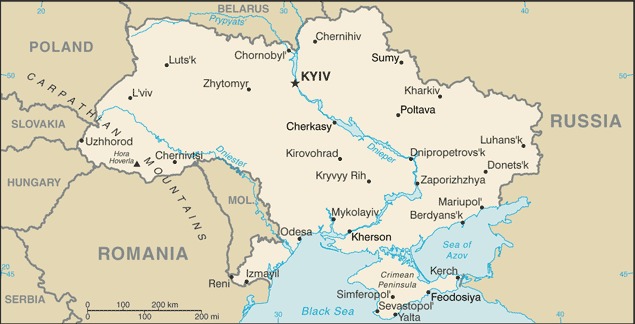Breaking Down the Military Tactics of Russia’s Invasion
Events in Kharkiv indicate that, even if Kiev is ultimately encircled, an attempt to capture the Ukrainian capital will cost the Russians rivers of blood.


What’s the “30,000-foot view” of the current military situation in Ukraine?
After almost a week of fighting, the thing most worthy of note is the resolve ordinary Ukrainians have shown in defending their national independence. While invading Russian ground units have made territorial gains, they’ve met with much fiercer resistance than expected. The Russians are thus behind schedule and suffering substantial casualties, which has profound implications for President Putin’s tactical and strategic options.
What are the tactical implications?
Russian military doctrine calls for attack by echelon. The first echelon of mostly mechanized infantry seeks to punch through enemy defensive lines and then the tank-heavy second echelon flows through gaps and attempts to sow havoc in the enemy’s rear areas.
On the Kiev front, the long columns of armor now reportedly advancing into Ukraine from the north are these Russian second-echelon units. Footage of destroyed Russian armor along the Kyiv-Zytomyr highway indicates that these units are trying to envelop the Ukrainian capital from the West.
Kiev is a major metropolis that sits astride the Dnieper River. This means that the Russians have to approach the city on both sides of the Dnieper in order to complete its envelopment. The advance along the eastern bank of the Dnieper appears to have stalled around Chernihiv, some 150 kilometers north of the capital. Unless this changes, Ukrainian supply lines into the city will remain open even if the Russian army succeeds with its thrust along the Dneiper’s western bank.
The Russians are addressing this tactical setback by sending another tank column to attack Kiev from the northeast. Latest reports place this armored force at Bobrovytsaya, a town of 10,000 inhabitants situated about 30 miles from the outskirts of Kyiv. If this force reaches the city, it could complete the encirclement of Ukraine’s capital from the east.
It’s also noteworthy that Mr. Putin’s Belarusian puppet dictator, Alexander Lukashenko, has sent units of his army into the Ukrainian fray. This very well might be an indication of the difficulties the Russians are suffering.
What about the Kharkiv front?
Kharkiv is a city of 1.5 million inhabitants that is situated 22 miles from the Russian border, less than an hour’s drive by T-90 tank. Despite this proximity, Russian troops are bogged down in bloody street fighting and unable to take the city. Russian commanders have responded to this stubborn Ukrainian resistance by bombarding central Kharkiv with tactical ballistic missiles. But an army cannot conquer territory with only missiles, aerial bombardment, and artillery barrages. At the end of day, boots on the ground are required to take and hold terrain. As we see in Kharkhiv, this type of street-by-street fighting through a major urban area is a very bloody affair.
Events in Kharkiv indicate that, even if Kiev is ultimately encircled, an attempt to capture the Ukrainian capital will cost the Russians rivers of blood.
How effective has the Russian Army shown itself to be?
There’s been wide variation in the combat effectiveness of Russian units fighting in Ukraine. Their airborne troops and Spetznatz special forces are elite volunteers whose performance on the battlefield has been quite effective.
Yet the mechanized and armored units that make up the bulk of the Russian army are manned by conscripts serving just one year of mandatory service, or reservists who’ve been mobilized for the purposes of this war. These troops have been confronted by Ukrainian civilians forming human chains in front of advancing tank columns.
A now famous video shows a Ukrainian grandmother berating a heavily armed Russian soldier without any scintilla of reticence or fear. In another clip, a passing Ukrainian civilian driver jokingly offers to tow a stranded Russian armored vehicle back across the border.
This combination of civil disobedience and scorn from Ukrainian civilians has had a corrosive impact on the morale of those Russian conscripts and reservists. Social media is overflowing with footage of captured Russian soldiers claiming their officers lied to them about going on exercises rather than to war. Ukrainian troops are finding Russian armored vehicles in pristine condition that have been abandoned by their crews.
Has the Russian invasion worsened inter-ethnic tensions within Ukraine?
To the contrary. Mr. Putin for years has tried to exploit divisions between ethnic Ukrainians and ethic Russians as an excuse to support the independence of the breakaway provinces of Donetsk and Lusank in eastern Ukraine, but there are growing indications that opposition to his invasion extends into the ethnic Russian-Ukrainian community. Just as there is growing opposition to the war within Russia itself, ethnic Russian-Ukrainians have volunteered in large numbers to take up arms against invading forces.

